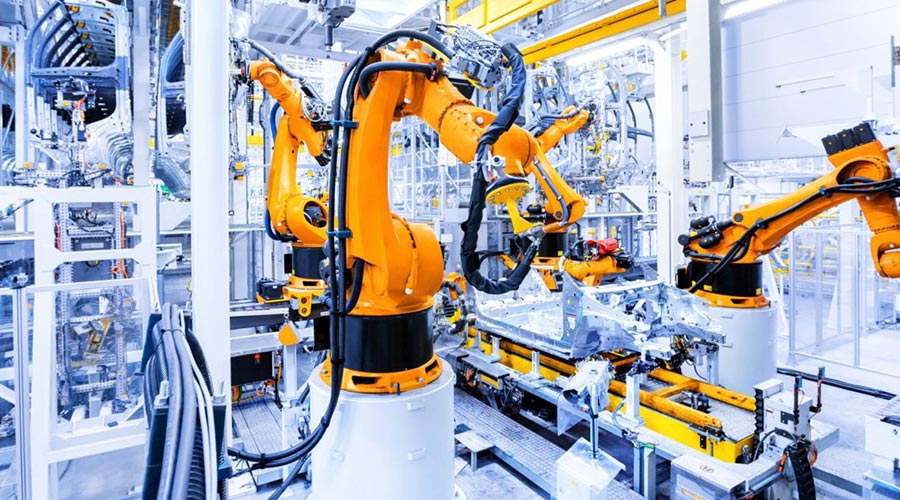
An industrial robot is a robot system used for manufacturing. Industrial robots are programmable, automated, and can move on three or more axes.
Now, let’s go through the top 10 uses of Industrial robots in manufacturing industries:
Arc welding, sometimes known as robot welding, became popular in the 1980s. One of the driving motivations for the transition to robot welding is the need to protect workers from arc burns and dangerous gases.
To transport, pack, and select items, material handling robots are used. They can also automate operations such as part transfer from one piece of equipment to another. Direct labour expenses are reduced, and many of the laborious and dangerous tasks that were previously handled by humans are no longer necessary.
Robotic painting is utilised in the automobile industry and many other sectors to improve product quality and uniformity. Rework is also reduced, resulting in cost savings.
The spot welding robot executes spot welding following the actions, sequences, and parameters defined in the instructional program; the process is entirely automated and has an interface for communicating with other equipment.
Spot welding unites two metal surfaces by passing a significant current across the spot, melting the metal and forming the weld in a short amount of time.
The forging robot is automatically controlled by an advanced computer and software, which can replace manual labour to fulfil the very risky, simple, repetitive, and labour-intensive operation of continuous loading, turning, and unloading in the forging manufacturing process. Simultaneously, it can effectively reduce labour intensity and risk, increase the degree of production automation, and enhance production efficiency.
Most items are handled several times before they are dispatched. Robotic picking and packing improve speed and accuracy while decreasing manufacturing costs.
The process of loading and unloading raw materials into machinery for processing and supervising the equipment while it executes a task is referred to as robotic automation for machine tending.
A flexible automated assembly system's primary equipment is an assembly robot, which consists of a robot operator, controller, end-effector, and sensor system. The operators' structural kinds include horizontal joint type, right angle coordinate type, multi-joint type, and cylindrical type.
Sealer robots are designed with a variety of robotic arm configurations that allow the robot to apply adhesives to virtually any sort of product. The key advantage of this application is improved product quality, speed, and consistency.
The deburring robot is a blend of mechanical and precise equipment, microelectronics and computers, automated control and drive, sensors and information processing, and artificial intelligence; it is the culmination of various fields' study.
POSTED BY
Team 13SQFT